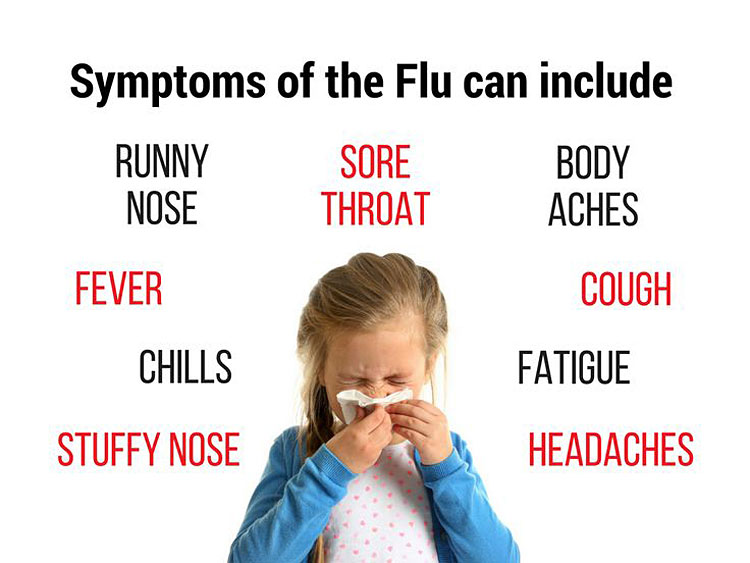
Adult death figures are inconclusive since some states are not required to report adult deaths due to the flu. Millions of Americans will lose an average of 4 workdays due to the flu. The loss of productivity is staggering! Five per cent of the U.S. population will be affected by the flu this season.
Flu Symptoms
Fever may be present, but not always. The treatments for flu symptoms are the same as for cold symptoms. Please read my first three articles for a review of treatments. Always keep in mind the use of home remedies, e.g., cold mist vaporizers for a cough, etc.
Flu Treatments
In addition to treating the symptoms of the flu, there is an antiviral medication available by prescription. Oseltamivir (Tamiflu) has had some success in limiting the dire effects as well as decreasing the duration of the flu. It should be started within 48 hours from the onset of flu symptoms to achieve maximum benefit. Due to the demand for this medication, there is a shortage of it in some parts of the United States.
Other agents with antiviral effectiveness are Relenza and Rapivab. Less serious side effects seen with Tamiflu and the other antiviral agents include some nausea, vomiting, diarrhea, headaches, nosebleeds, eye redness, sleeplessness, and cough.
Flu Prevention
Once vaccinated, it takes about two weeks to achieve full immunity. The current flu vaccine shows less than 60% effectiveness for the H1N1 strain and about 25 to 32% effectiveness for the H3N2 strain. Each strain of the flu virus provides its own degree of harm (virulence) to the human body.
Even with less effectiveness for H3N2, this year’s vaccine has reduced flu-related death by 50% for children with high-risk medical conditions and by 67% for healthy children. The vaccine offers greater protection for children less than nine years of age. The vaccine may cause soreness at the site of injection, headache, fever, nausea, and muscle aches. The Centers for Disease Control and Protection (CDC) is recommending everyone six months of age and older be vaccinated. There are subgroups with major medical conditions and people over the age of 65 that should be vaccinated.
This year’s more severe flu activity is peaking later than in the past, more into the month of February. Healthcare officials are stating that the flu season will last eleven to thirteen more weeks after reaching its peak.
The flu vaccine is still available for use. The choices are up to you. Be safe rather than be sorry.